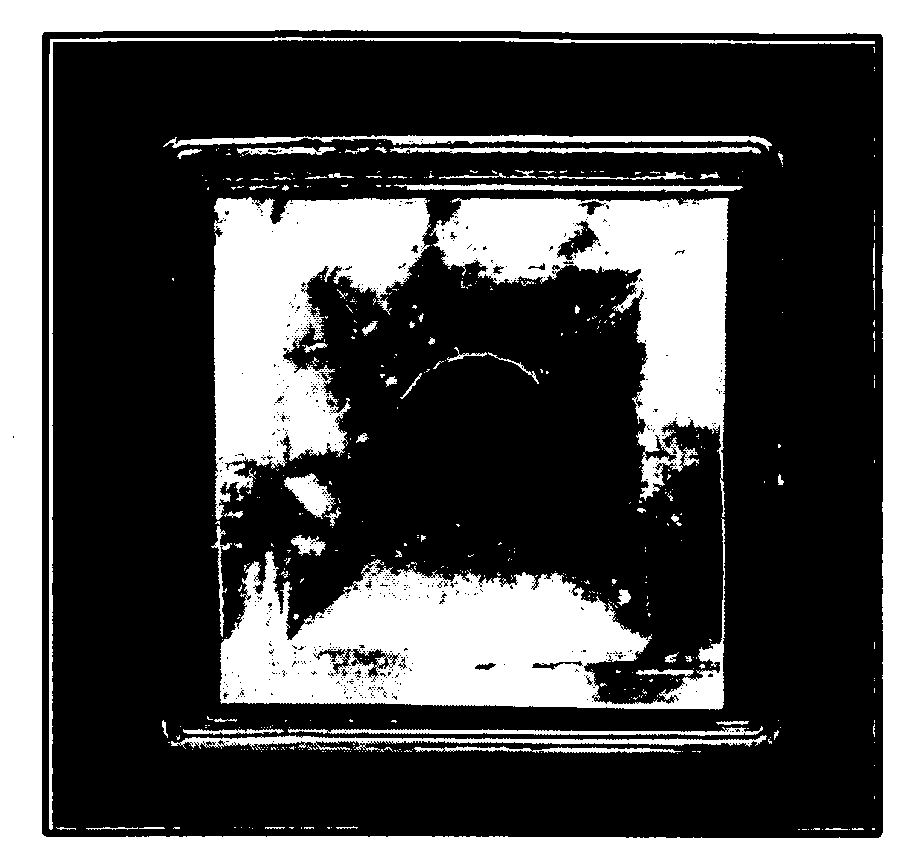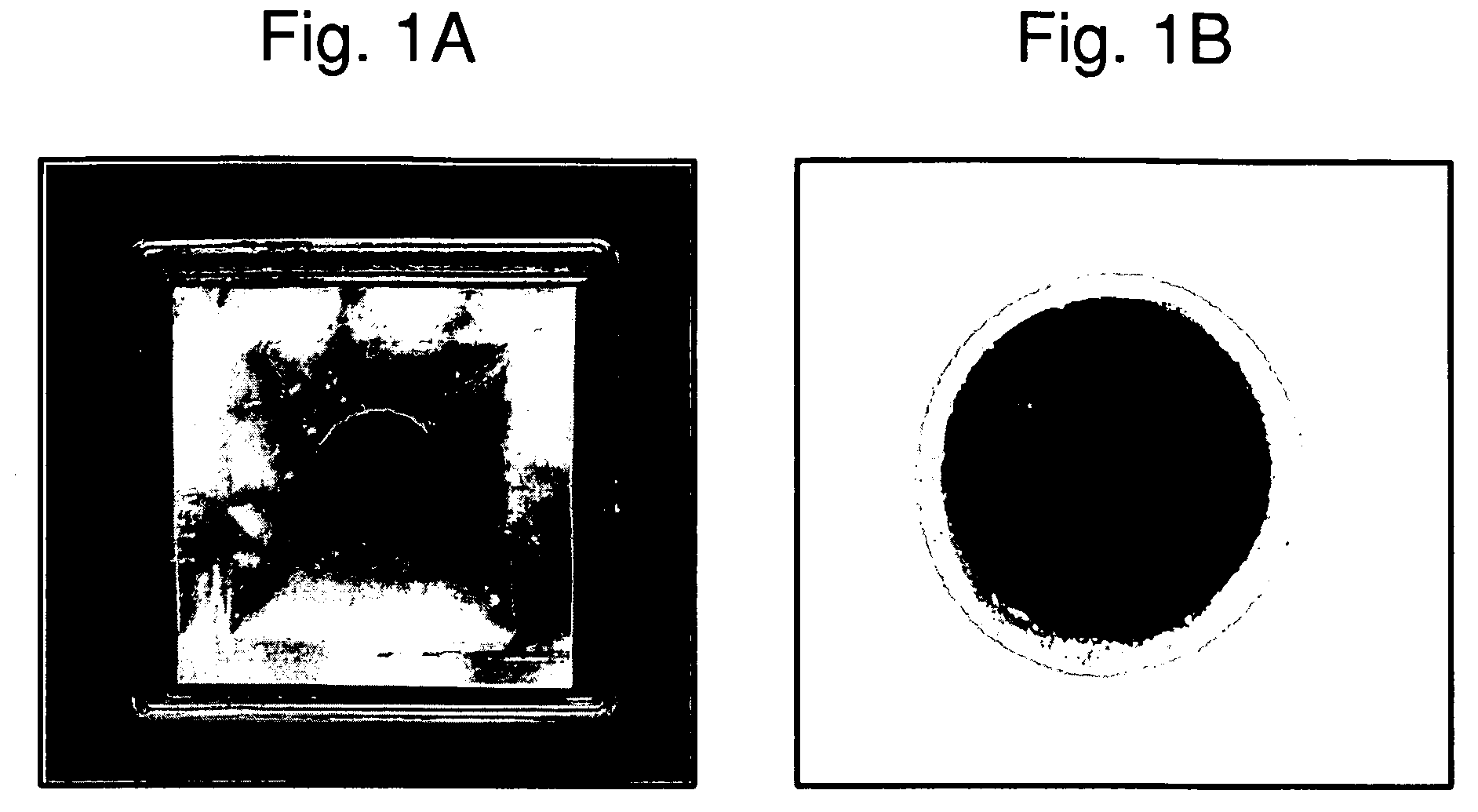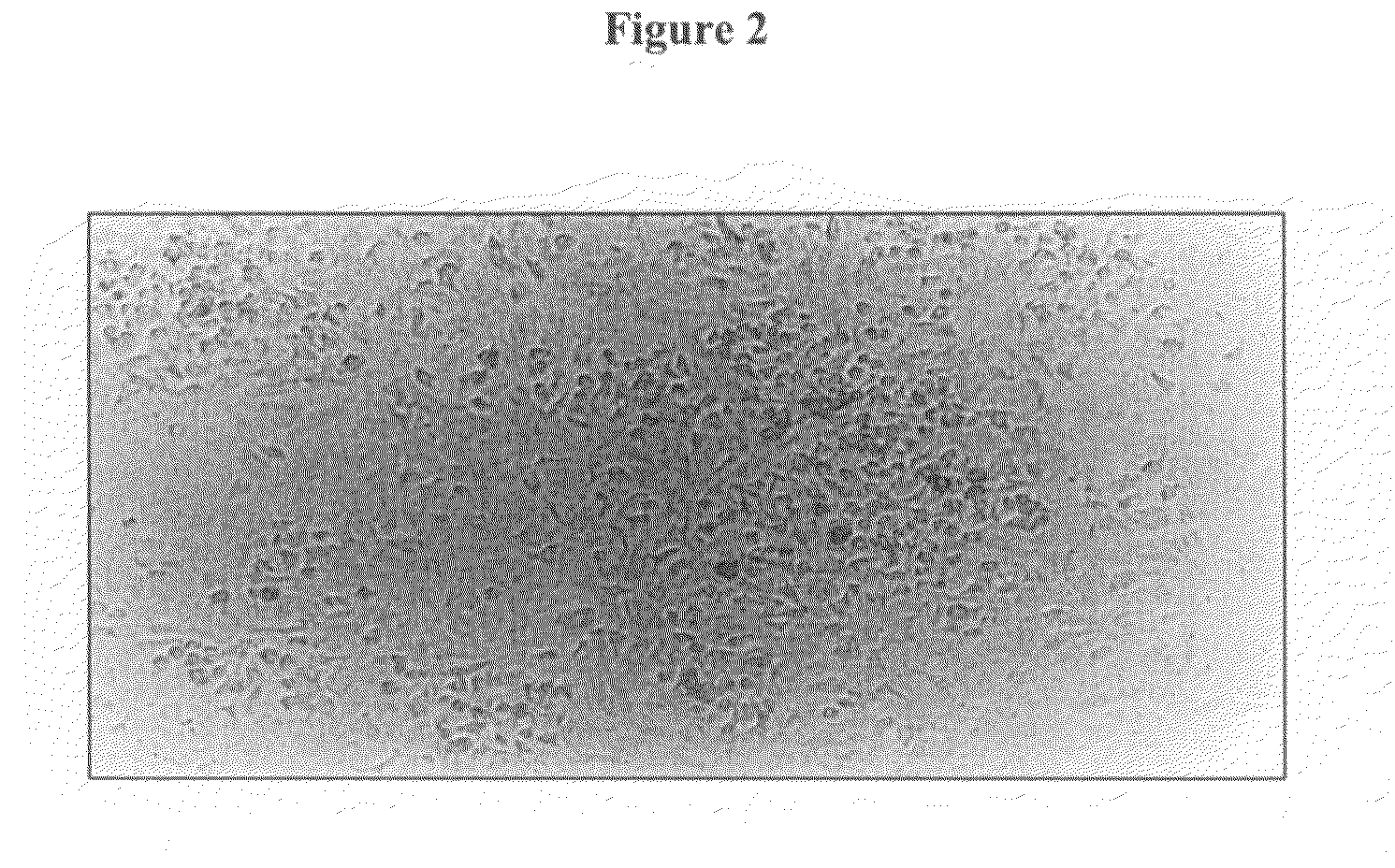Three-dimensional tissue equivalent using macromass culture
a three-dimensional tissue and culture technology, applied in the field of tissue engineering, can solve the problems of insufficient vascular or venous healing, poor healing effect of neuropathic diabetic foot ulcers, and toxic topical antiseptics, such as povidone-iodine, and achieve the effect of improving the healing effect and improving the healing
- Summary
- Abstract
- Description
- Claims
- Application Information
AI Technical Summary
Benefits of technology
Problems solved by technology
Method used
Image
Examples
example 1
Preparation of the Three Dimensional Tissue Equivalent
I. Cell Isolation and Culture.
[0108]In the present invention, human dermal fibroblasts were isolated from discarded human skin biopsies obtained with written informed consent. The dermis was separated from the epidermis by treatment with Dispase (Sigma, St. Louis, USA). The dermis was minced and digested with 0.01% collagenase in DMEM+10% FCS overnight and then cells were allowed to attach to a culture flask. Cells were cultured in DMEM+10% FCS at 37° C. in 5% CO2 and subcultured using Trypsin-EDTA solution.
II. Preparation of Chitosan Sponges.
[0109]Chitosan sponges having a diameter of 3.0 cm and thickness of about 1.5 mm were prepared by lyophilization of frozen chitosan solution in 3.5 cm dishes. After lyophilization, the chitosan sponges were stabilized in isopropanol. The chitosan sponges were treated with ammonia and methanol solution. Chitosan sponges were rinsed with water for 3 hours with shaking. Chitosan sponges were th...
example 2
Characterization and Evaluation of Three Dimensional Tissue Equivalents
[0114]The three dimensional tissue equivalent of the present invention was evaluated for safety and effectiveness, and the data are classified below in four categories: (1) Safety, (2) Potency, (3) Purity, and (4) Stability.
1. Safety
A) Sterility
[0115]To ensure that aseptic conditions were maintained from the manufacturing process until final packing, the batches of tissue equivalent of the present invention were tested for sterility to detect the presence of aerobic and anaerobic microbes. This test was performed using the Direct Inoculation method (IP, 1996), which involved inoculating the test sample in two different sterile nutritive media, namely, Fluid Thioglycollate Medium (FTM) and Soybean Casein Digest Medium (SCDM). Absence of growth in the inoculated media during the incubation period of 14 days confirmed the sterility of the samples.
B) Bioburden
[0116]The microbial load in terms of number of colonies ap...
example 3
In Vivo Studies and Toxicology
1. Study of Efficacy and Safety of Tissue Equivalent of the Present Invention in a Wound Healing Animal Model.
[0133]The efficacy and safety of the tissue equivalent of the present invention was assessed by performing a skin wound healing study in severe combined imunodefiicent (SCID) CB17 mice. SCID mice were used since the dermal dressing to be tested consists of human cells, which would undergo xenograft rejection if tested on animals that are non-immuno-compromised. The study was carried out in accordance with CPCSEA guidelines and with IAEC approval. There were four sets of animals, one set for each time period after surgery and application where tissue would be harvested, namely, 4 days, 8 days, 12 days, and 16 days. For each time point, there were three control animals and six animals treated with the tissue equivalent. In the control group, chitosan sponge alone was applied on each wound. In the treated group, the tissue equivalent was applied on...
PUM
| Property | Measurement | Unit |
|---|---|---|
| diameter | aaaaa | aaaaa |
| thickness | aaaaa | aaaaa |
| thickness | aaaaa | aaaaa |
Abstract
Description
Claims
Application Information
 Login to View More
Login to View More - R&D
- Intellectual Property
- Life Sciences
- Materials
- Tech Scout
- Unparalleled Data Quality
- Higher Quality Content
- 60% Fewer Hallucinations
Browse by: Latest US Patents, China's latest patents, Technical Efficacy Thesaurus, Application Domain, Technology Topic, Popular Technical Reports.
© 2025 PatSnap. All rights reserved.Legal|Privacy policy|Modern Slavery Act Transparency Statement|Sitemap|About US| Contact US: help@patsnap.com



